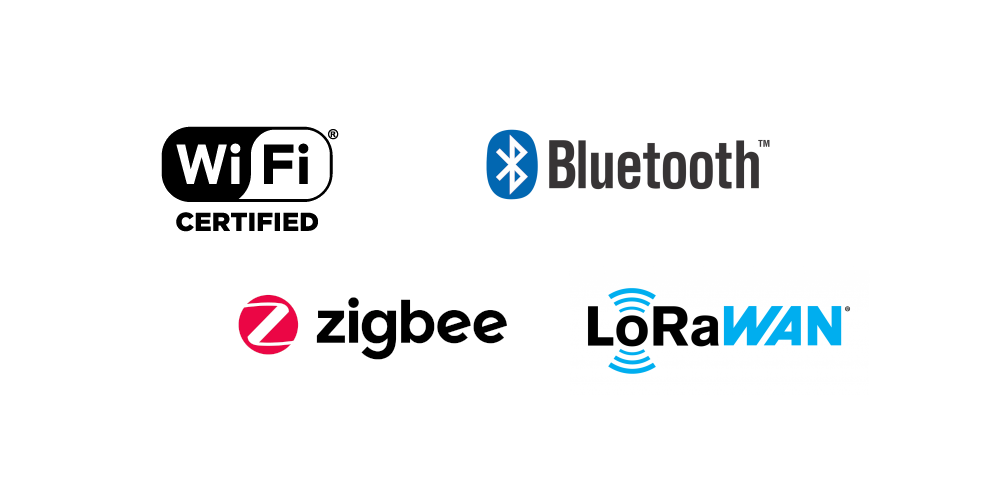Exploring Wi-Fi, Bluetooth, Zigbee, and LoRa
Introduction
In the realm of embedded systems, Arduino, Raspberry Pi, and the Internet of Things (IoT) have revolutionized the way we interact with our surroundings. With a plethora of sensors and devices at our disposal, it’s crucial to understand the various wireless communication technologies available for IoT projects. In this article, we will delve into the features, pros, and cons of four popular wireless communication technologies: Wi-Fi, Bluetooth, Zigbee, and LoRa.
Wi-Fi
Wi-Fi has become a ubiquitous technology in our daily lives. It allows devices to connect to the internet and communicate with each other wirelessly at high speed. Some key aspects of Wi-Fi for IoT projects include:
Pros
- High data transfer rates enable real-time communication and streaming of multimedia content.
- Medium coverage range, making it suitable for applications that require local communication.
- Extensive infrastructure and compatibility, with a vast number of devices supporting Wi-Fi connectivity.
- Easy integration with cloud services, enabling seamless data exchange and remote control.
Cons
- Power consumption is relatively high, which can be a concern for battery-operated IoT devices.
- Costlier compared to other wireless technologies, especially when deploying a large number of devices.
- Depending on the IT environment, the setup can be complex, requiring network knowledge and expertise.
Bluetooth
Bluetooth is commonly used for short-range wireless communication between devices. It has evolved over the years, introducing low-energy variants (Bluetooth Low Energy or BLE) suitable for IoT applications. Its characteristics are:
Pros
- Low power consumption, making it ideal for battery-powered IoT devices.
- Simple and easy pairing process, allowing for quick device connections.
- Extensive compatibility with smartphones, tablets, and other Bluetooth-enabled devices.
- Supports point-to-point and broadcast communication modes.
Cons
- Limited range, typically 50 – 100 meters, which may be insufficient for certain IoT applications.
- Moderate data transfer rates, restricting the transmission of large volumes of data.
- Interference from other Bluetooth devices in crowded environments.
Zigbee
Zigbee is a wireless communication protocol designed specifically for low-power, low-data-rate applications. It operates on the 2.4 GHz frequency band and is commonly used in home automation and industrial control systems. Let’s explore its advantages and disadvantages:
Pros
- Low power consumption, allowing for extended battery life in IoT devices.
- Mesh networking capability, enabling devices to relay messages, extending the communication range.
- Robust and reliable communication, even in environments with interference.
- Scalability, with the ability to accommodate a large number of devices in a single network.
Cons
- Limited data transfer rates, suitable for small amounts of data or control messages.
- Higher cost compared to some other wireless technologies.
- Limited compatibility with non-Zigbee devices, requiring additional hardware for integration.
LoRa
LoRa (Long Range) is a wireless communication technology designed for long-range, low-power IoT applications. It operates in the sub-GHz frequency bands and offers exceptional coverage in both urban and rural environments. Consider the following aspects of LoRa:
Pros
- Long-range communication, reaching up to several kilometers in open areas.
- Low power consumption, enabling battery-operated IoT devices to operate for extended periods.
- Suitable for low-data-rate applications, such as environmental monitoring and asset tracking.
- Wide network coverage with fewer infrastructure requirements.
Cons
- Lower data transfer rates compared to technologies like Wi-Fi and Zigbee.
- Limited bandwidth availability, restricting the simultaneous transmission of large volumes of data.
- Higher implementation complexity, requiring specialized gateways and backend infrastructure.
Each technology discussed – Wi-Fi, Bluetooth, Zigbee, and LoRa – offers distinct advantages and disadvantages depending on the requirements of your project. Consider factors such as range, power consumption, data transfer rates, and compatibility to make a decision.

